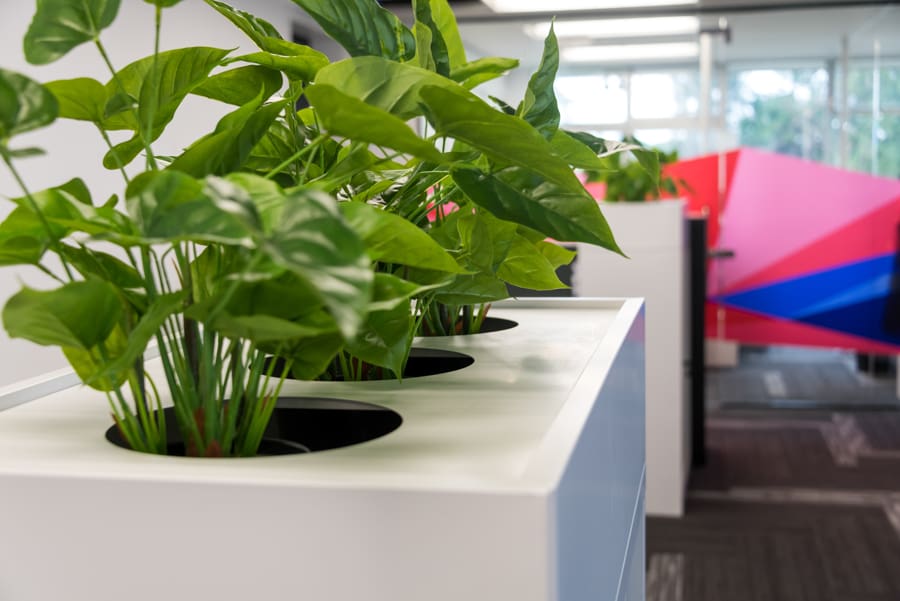Office Acoustics Solution
Our senses are the medium through which we live our lives. They’re how we experience the world around us. Sight is perhaps the most prevalent and the one people pay the most attention to when they plan space, but there’s another sense that’s just as important, one that’s often understated… We’re talking about sound.
Out of sight, front of mind
Our hearing tends to run in the background, and so often, very subtle things may affect us, yet we won’t realise it. Research has even shown that sound waves sometimes cause feelings of dread commonly attributed to hauntings.
A rattling aircon or a dripping tap may keep us up all night, while a pleasant melody might free our minds and allow us to unwind. That’s all to say that acoustics are important, especially in workspaces.
Acoustics in the office
Of course, like any populated place, the office is alive with sound. The clacking of keyboards, footsteps, talking, and the occasional cough. The question then is, what effect does this have on productivity?
Too much noise harms productivity. Workers can become distracted as the auditory noise builds. Some studies even show that excess noise can increase stress levels and hinder the ability to concentrate. It could even lead to health problems.
A complete overload of sound might make it impossible to work at all. Is the solution then, the elimination of sound?
A silent solution?
While a cacophony is obviously bad for productivity, if things are too silent, the ambience of a space can become unnerving.
It’s important to remember that complete silence is unnatural. Even the quietest natural spaces have some sound. The rolling of ocean waves, the breeze in the trees, or the chirping of crickets. If silence isn’t the answer, then how can you optimise acoustics in your workspace?
Strike a balance
The solution is to balance noise and silence. Don’t stifle the sound, rather contain it through smart office design. The goal is to zone your workspace so that each area is built to contain a certain level of noise so you can ensure that no one area pollutes others.
How is this done? To answer that, we need to learn more about how sound works and is measured.
NRC and Sabin
Noise Reduction Coefficient or NRC measures how much a material absorbs sound, vs how much it reflects on a scale from 0 to 1.0. If something has an NRC of 0.5, this means that it absorbs 50% of the sound that hits it, while it reflects 50% back out into the environment.
The higher a surface or material’s NRC, the better it is at reducing sound.
Sabin, on the other hand, measures how much a particular square meter absorbs. It refers to overall sound quality.
While, as PLN Group’s Layman’s Guide to Acoustics points out, NRC and Sabin are often confused, they are different. NRC refers generally to a surface’s ability, regardless of size, and Sabin refers to a set square meter’s ability. Sabin includes consideration of NRC.
Fine-tuning office acoustics
Sound is natural; you just need to ensure that it is only heard where it’s appropriate. In an office, your main concern will be human speech and other midrange tones.
Hardwood floors and solid desks have a low NRC, and so do little to “soak up” sound. Instead, opt for soft carpeting. You can’t ditch desks, so installing soft padded dividers between different areas of the office can help raise the overall NRC of a space, and the Sabin count, meaning better sound quality.
Finally, places made for talking, such as meeting rooms, can be fitted with glass to keep sound inside. With a smart fit-out, you can raise the overall sound quality in the workplace by makings sure each area has an appropriate NRC.
Achieving ambience
With a workspace fitted to optimise acoustics, you can have a harmonious environment that actively boosts productivity. In recent times, people have been using ASMR (Autonomous sensory meridian response) audio tracks to study, relax, and help focus.
The most popular ASMR genres, ironically enough, emulate being in environments such as coffee shops, transport terminals, and, yes, even offices. The subtle noises stimulate the mind. With the right fit-out, you can have the genuine thing.
Conclusion
A good office fit-out is mindful of the aesthetic and the acoustic. Shape can help you find the perfect solution. Find the right fit today to raise your workplace’s NRC, eliminate distraction, and boost productivity. A workplace optimised for acoustics is surely a sound investment.

